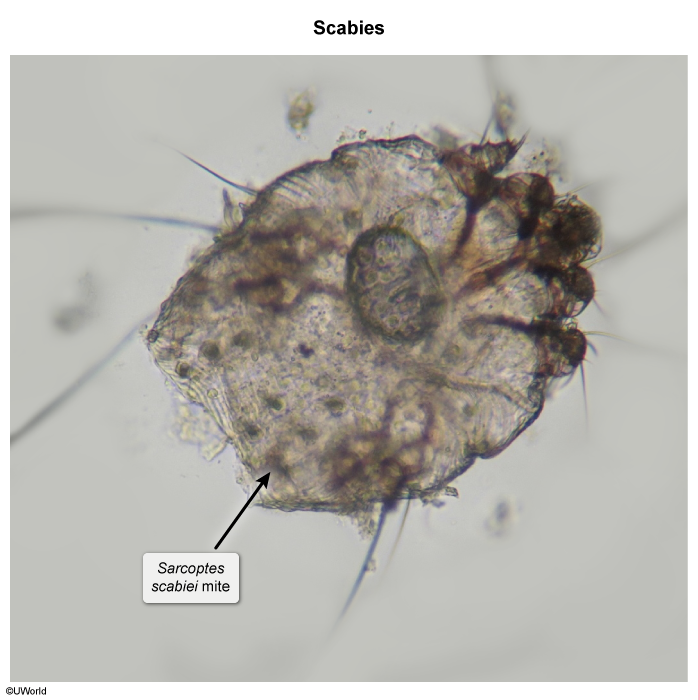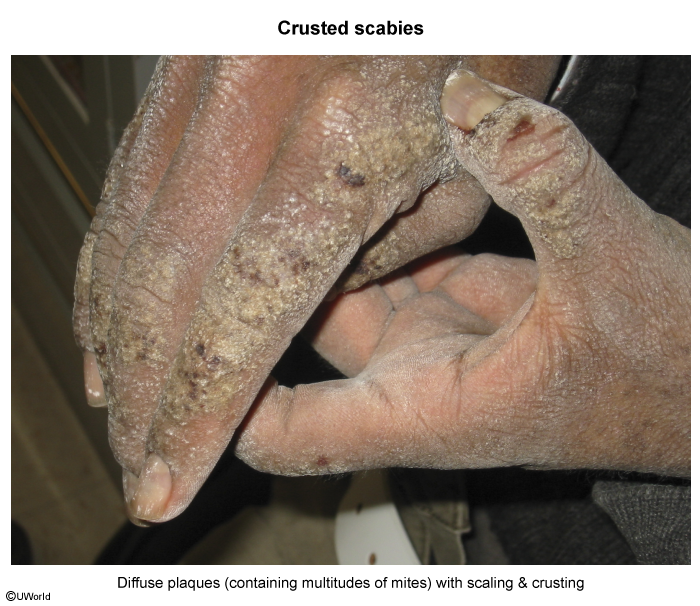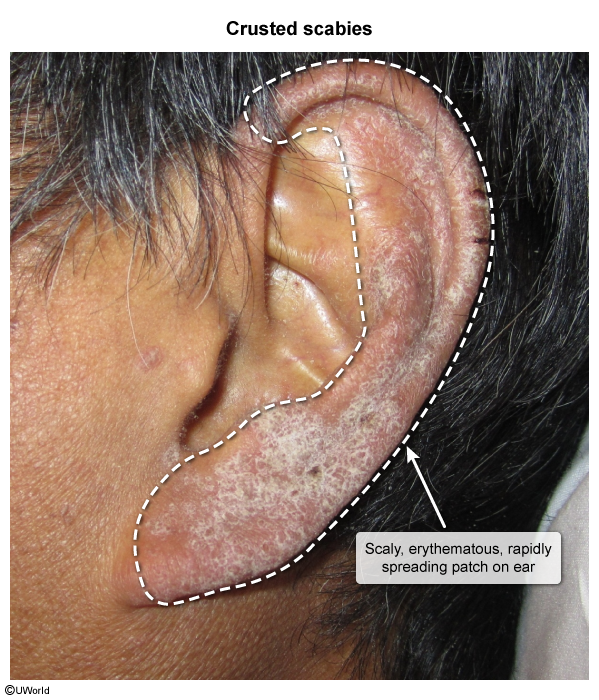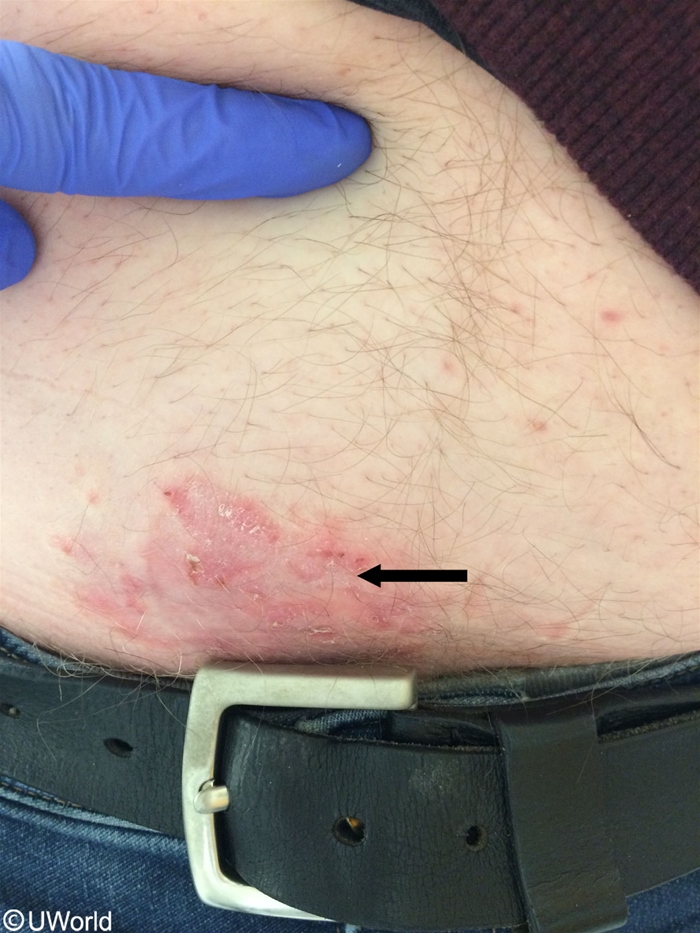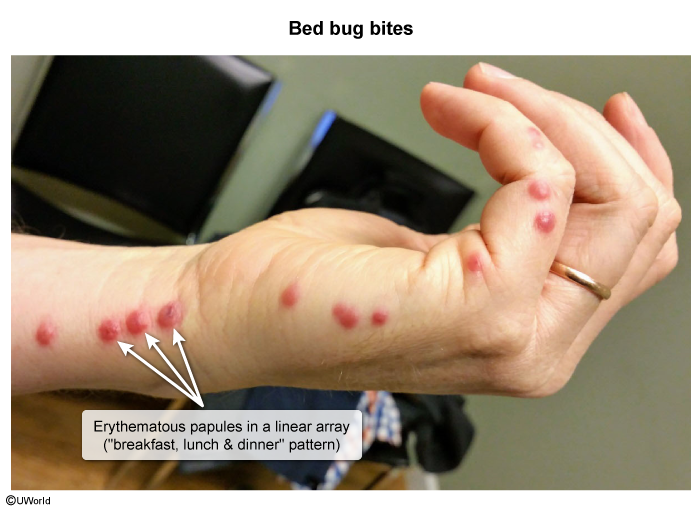Scabies
Article Sections
Introduction
Scabies is a highly contagious parasitic infestation of the skin caused by the mite Sarcoptes scabiei (Image 1), which triggers a delayed type IV hypersensitivity reaction. Patients classically present with intense pruritus and a characteristic skin rash.
Pathophysiology and risk factors
Scabies is caused by female S scabiei mites that burrow into the epidermis. After burrowing, they lay eggs and excrete feces, triggering a delayed type IV hypersensitivity reaction. Patients develop intense pruritus and skin inflammation, typically 3-6 weeks after the initial infestation. During this time, patients with classic scabies carry an average of 10-15 mites. In contrast, patients with reduced cellular immunity (eg, immunosuppression, HIV) may carry millions of mites on their body.
Scabies occurs worldwide and affects patients of every age. Transmission occurs primarily through direct, prolonged skin-to-skin contact with a person with scabies infestation. Therefore, factors that increase the likelihood of prolonged interpersonal contact (eg, crowded living conditions) increase the risk for scabies.
Continue Learning with UWorld
Get the full Scabies article plus rich visuals, real-world cases, and in-depth insights from medical experts, all available through the UWorld Medical Library.
Figures
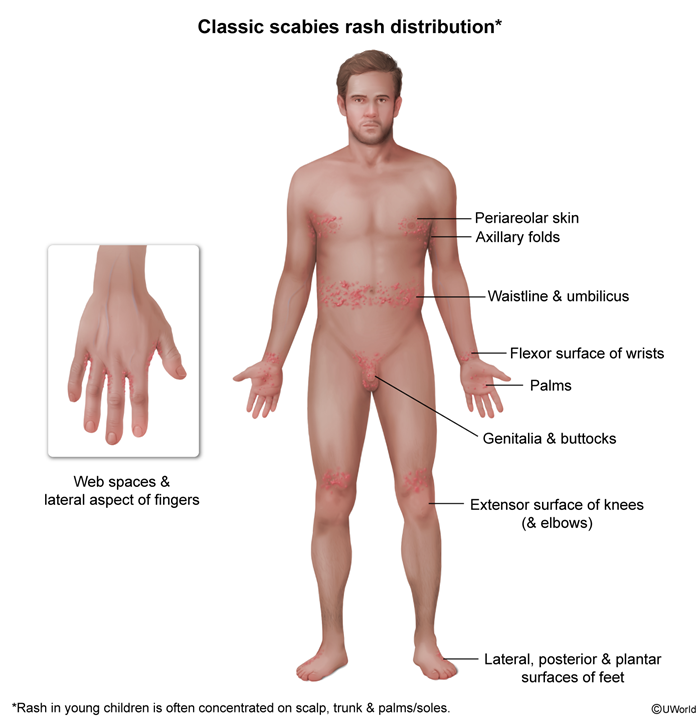
Images
